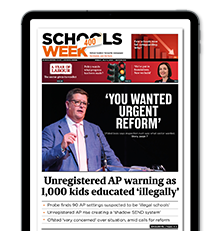Education secretary Bridget Phillipson will co-lead a new ministerial taskforce to help develop a child poverty strategy, the prime minister has announced.
Sir Keir Starmer today appointed Phillipson and Liz Kendall, work and pensions secretary, to head up the team.
A new child poverty unit in the Cabinet Office, with a brief to help ministers create an “ambitious strategy”, will report into the taskforce, the government said.
It will consider how ministers can use policy levers in areas such as education, household income, housing, children’s health and childcare to tackle child poverty.
The first meeting is set to take place in the coming weeks and secretaries of state from across government will take part in the work, a Number 10 press release added.
In the King’s Speech, government today pledged to introduce a “children’s wellbeing bill” in the next year, including a requirement for free breakfast clubs in every primary school.
But campaigners, including the Child Poverty Action Group, criticised Labour for not scrapping the so-called two-child benefit cap.
The George Osborne-era policy means low-income families cannot claim Universal Credit or Child Tax Credit for their third or subsequent children born after April 2017. The Institute for Fiscal Studies estimates 250,000 extra children will be affected by this next year.
Daniel Kebede, NEU general secretary, said removing the two-child limit would cost “very little”, compared to overall government expenditure, and would “lift hundreds of thousands out of poverty at a stroke”.
Child poverty has gone up by 700,000 since 2010 with over four million children now growing up in a low-income family, the government said.
Phillipson said: “For too many children, living in poverty leaves them not ready to learn and robbed of opportunity.
“But child poverty reaches far beyond the school gates and alongside the work and pensions secretary, I am determined to drive the work forward to support families and communities.”
The taskforce will work closely with parents, charities and civil organisations to help “remove the stain of child poverty from our country”, she added.















Please ask these people what it is they would like us to do.
This is what we do in good schools.
We engage with our communities and listen and respond even though we have little power to affect the changes they need.
Decent accommodation
Outdoor play area
good food
enough money to do things together
access to good health provision
schools to be a a hub for support properly funded
efficient services that help quickly
children are what they experience and develop issues as they feel unfairness, blighting them for life!!
We need to reduce the number of pupils per teacher. In a secondary school most teachers teach around 30 per class and over 300 pupils altogether per year, we can’t give each pupil the individual attention they need. You end up focusing on the ones that are engaged and are hungry to learn, which often ends up being pupils from more affluent backgrounds with supportive families.